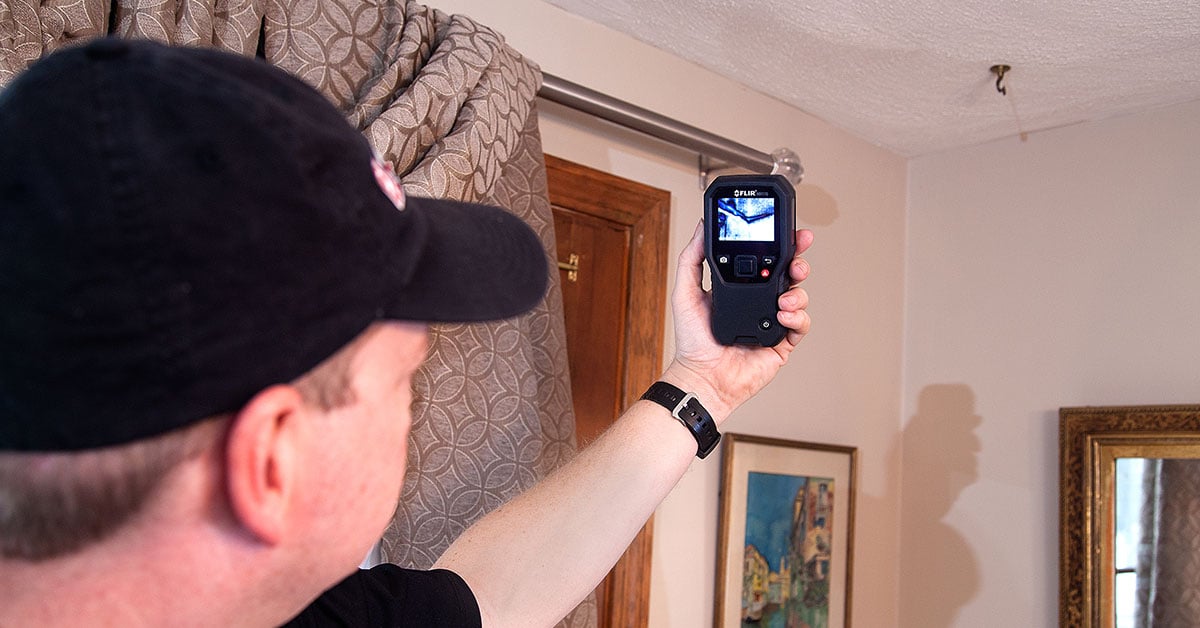The Value of Routine Water Leak Detection for Long-Term Home Security
The Value of Routine Water Leak Detection for Long-Term Home Security
Blog Article
Innovative Solutions for Very Early Detection of Water Leaks in Structures and Facilities
As the stability of buildings and framework is critical, the obstacle of early discovery of water leakages has stimulated ingenious remedies that guarantee to change the way we guard against prospective problems. From cutting-edge leakage discovery technologies to the implementation of IoT sensing units for real-time monitoring, the landscape of leak avoidance is evolving quickly. Artificial intelligence formulas supply a glimpse into the future of leakage prediction, while thermal imaging presents a non-intrusive approach for pinpointing covert leakages. Automated water circulation evaluation systems are reshaping how leakages are recognized and dealt with, leading the way for an aggressive approach to water leak detection. Each of these solutions holds the essential to making certain the integrity and longevity of our built environment, triggering a shift towards an extra lasting and reliable future.
Advanced Leakage Detection Technologies
Advanced leak detection innovations, outfitted with sophisticated sensors and formulas, play a vital role in promptly identifying and determining water leaks in numerous settings. Electro-magnetic sensing units can determine adjustments in electromagnetic fields caused by water, using yet an additional layer of leak discovery capability.

IoT Sensors for Real-Time Monitoring
In the realm of contemporary water leakage discovery, the integration of IoT sensors for real-time monitoring represents an essential innovation in enhancing proactive leak detection abilities. These sensors use continual surveillance of water supply, supplying real-time information on water circulation prices, stress variants, and temperature level adjustments. By leveraging IoT innovation, these sensing units can detect even the smallest abnormalities in water use patterns, making it possible for very early identification of prospective leaks before they escalate into major issues.
IoT sensing units send information to a central platform, where advanced algorithms assess the details and create informs or notices when abnormalities are detected. This real-time surveillance capacity enables homeowner or center managers to promptly address leakages, lessening water damage, decreasing repair prices, and saving water resources.
Furthermore, IoT sensing units can be integrated with building monitoring systems, enabling automated feedbacks to found leaks, such as turning off water valves or activating pumps to minimize the effect of leaks. On the whole, the application browse around this site of IoT sensors for real-time tracking considerably boosts the performance and efficiency of water leakage detection in structures and facilities.
Machine Discovering Algorithms for Leak Prediction

One key advantage of using equipment home discovering for leak forecast is its capability to continuously find out and enhance its accuracy gradually. As more information is gathered and fed right into the formula, it can fine-tune its predictions and adjust to changing problems, ultimately boosting the reliability of leakage detection systems.
Moreover, equipment knowing formulas can help in recognizing subtle indicators of leakages that may go unnoticed by typical monitoring approaches. water leak detection. By analyzing complicated information embed in real-time, these formulas can provide early cautions and alerts, permitting prompt intervention and preventative maintenance to alleviate possible water damage and linked costs
Using Thermal Imaging for Leakage Detection
Thermal imaging modern technology offers an appealing technique for finding water leakages in numerous systems and infrastructures. By utilizing infrared radiation and temperature level variances, thermal imaging cameras can identify hidden leakages that are not conveniently visible to the naked eye.
One of the essential advantages of thermal imaging for leakage discovery is its non-intrusive nature. Unlike typical approaches that may require breaking into wall surfaces or floorings to find leaks, thermal imaging permits non-destructive screening. This not just conserves time and lowers costs but also decreases disturbance to the building or infrastructure being assessed. In addition, thermal imaging can swiftly check large locations, supplying a detailed summary of potential leakage sources in a timely fashion. In general, using thermal imaging modern technology boosts the performance and accuracy of water leakage discovery, making it an important device for preserving the stability of structures and facilities.
Automated Water Flow Evaluation Systems
Just how can automatic water flow analysis systems reinvent the discovery and management of leaks in various systems and frameworks? Automated water circulation analysis systems offer a positive strategy to leakage detection by constantly keeping an eye on water circulation rates and patterns. By developing standard data, these systems can swiftly recognize deviations that may show a leak, allowing punctual treatment to avoid considerable damage.
These systems use advanced formulas to assess real-time data and offer instant signals when anomalies are discovered, permitting speedy action to be taken. In addition, automated water circulation evaluation systems can be integrated with building administration systems or IoT systems, boosting total efficiency and enabling remote monitoring abilities.
Furthermore, the information accumulated by these systems can be made use of for anticipating maintenance purposes, helping to identify possible weak factors Recommended Reading in the framework prior to leaks occur. Overall, the application of automatic water flow evaluation systems can dramatically boost leakage detection and management techniques, eventually leading to cost financial savings, reduced water wastage, and increased sustainability in buildings and infrastructure.

Conclusion
Finally, the integration of innovative leak discovery modern technologies, IoT sensors, equipment learning algorithms, thermal imaging, and automated water flow analysis systems offers innovative solutions for early detection of water leakages in structures and framework. These modern technologies make it possible for real-time surveillance, forecast of leaks, and efficient detection methods to stop water damage and wastage. Applying these remedies can aid in keeping the stability and sustainability of water systems in various setups.
Report this page